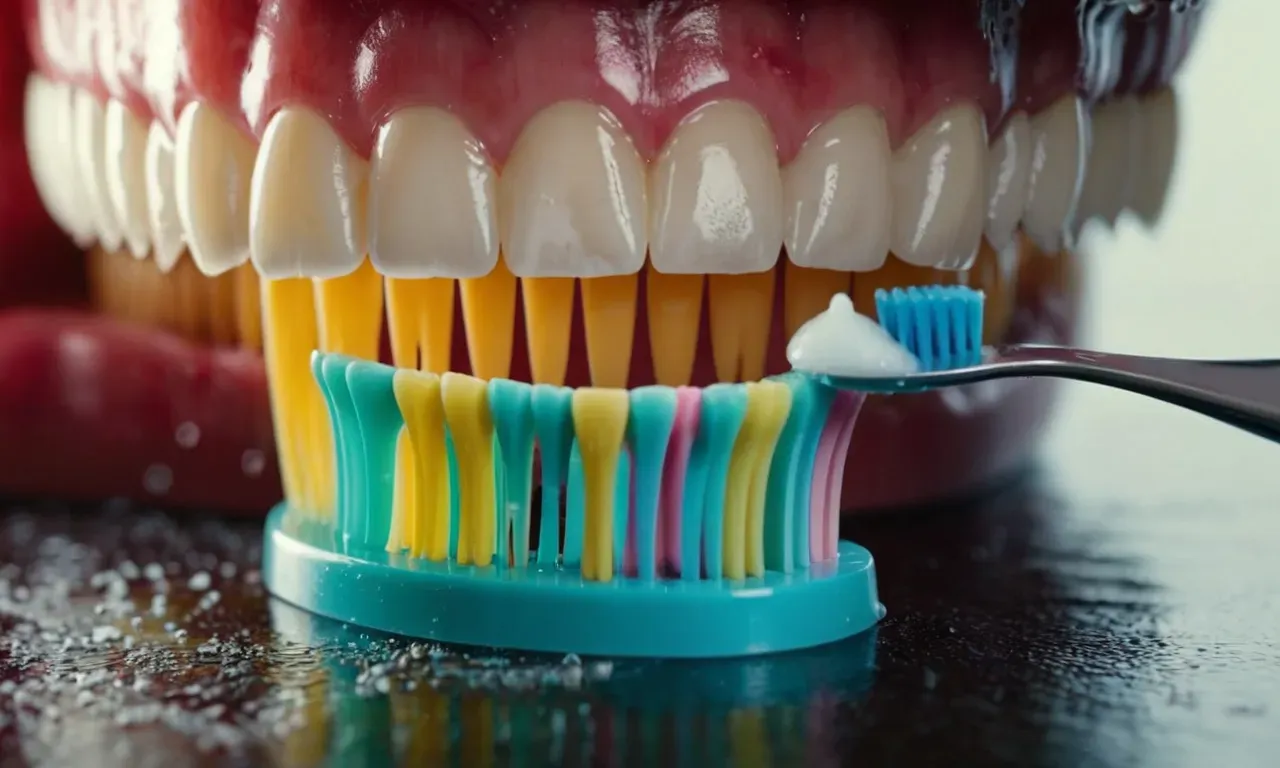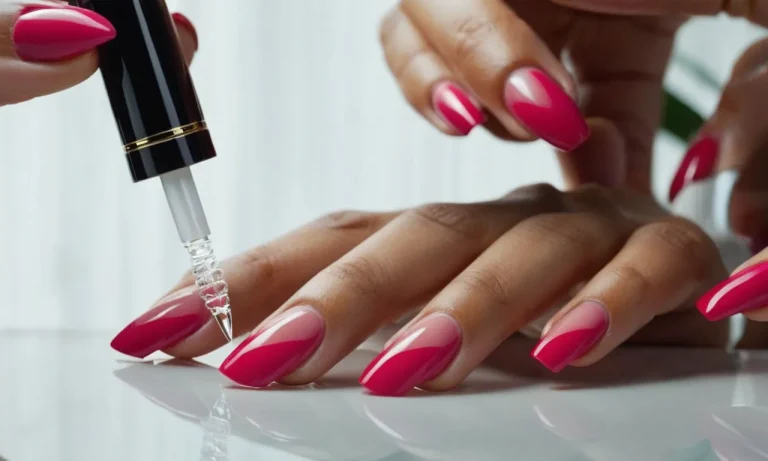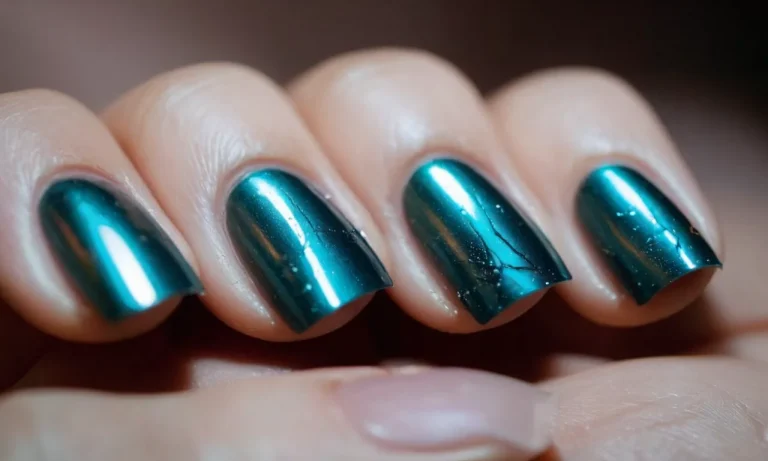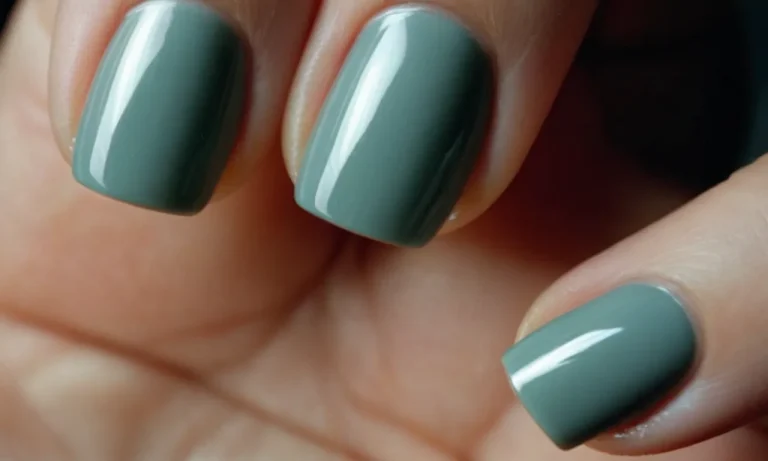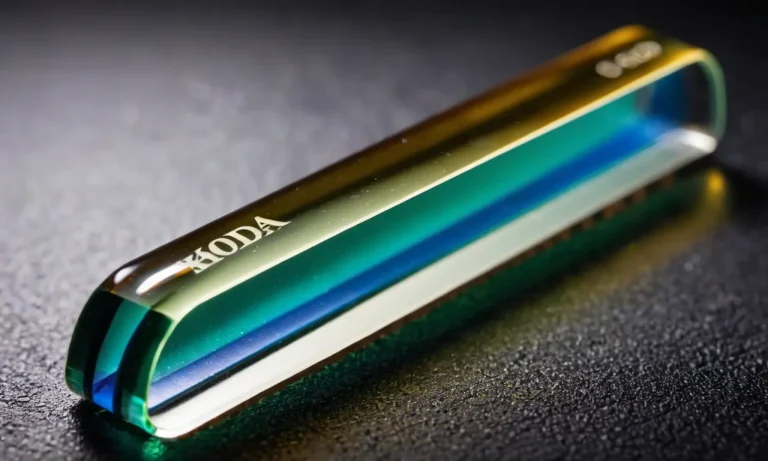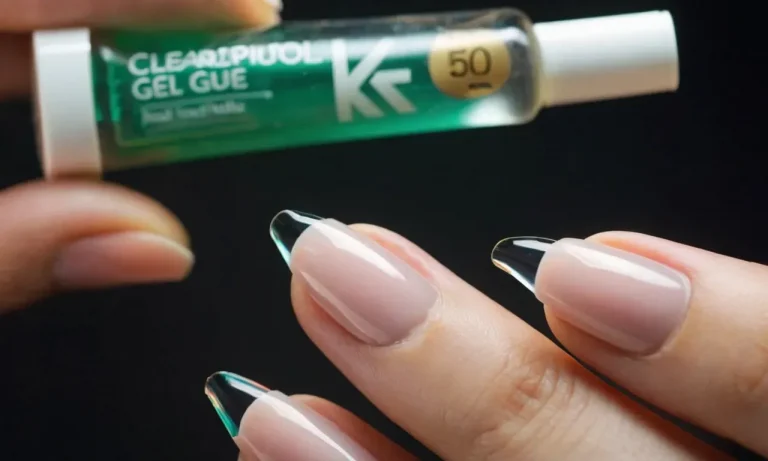How To Get Nail Glue Off Your Teeth: A Complete Guide
Getting nail glue on your teeth can be an annoying and embarrassing situation. Maybe you were doing your nails in a hurry and some glue dripped onto your teeth, or perhaps you accidentally got some on while trying to re-glue a broken nail.
Whatever the reason, having glue stuck to your teeth is never a good look.
If you’re in a rush, here’s a quick answer to getting nail glue off teeth: soak a cotton ball in acetone-based nail polish remover and hold it against the glue for 30 seconds. The acetone will dissolve the glue so you can wipe it away. Be careful not to swallow any remover.
In this comprehensive guide, we’ll go over several methods for removing different types of nail glue from your teeth quickly and safely.
Identify What Kind of Nail Glue is on Your Teeth
Cyanoacrylate glue
Cyanoacrylate glue, commonly known as super glue, is a fast-drying adhesive that cures quickly when it comes into contact with moisture. This type of glue is commonly used for gluing artificial nails and can sometimes end up accidentally getting on your teeth if you’re not careful.
If cyanoacrylate glue gets on your teeth, don’t panic. Here are some tips for removing it safely:
- Don’t try to pull or pry the glue off with your fingers or tools, as this can damage your teeth
- Rinse your mouth with warm water to help loosen the glue
- Gently brush the affected area with a soft toothbrush – the abrasion can help break down the glue
- Use an oil like coconut or olive oil to help break down the glue – let it sit for a few minutes, then rinse
- If needed, make a dentist appointment to have them professionally remove any leftover glue
The key is to be gentle and take your time removing cyanoacrylate glue from teeth. Harsh scrubbing can damage tooth enamel. With some warm water and oil, the glue should gradually soften and come off within a day or so.
UV or LED gel glue
UV or LED gels are commonly used in gel manicures or for sculpting artificial nails. Like cyanoacrylate glue, they can be tricky to remove if accidentally gets on your teeth.
Here are some tips for removing UV or LED gel from teeth:
- Do NOT try to peel or pick at the gel – this can damage your teeth
- Rinse your mouth with warm water and use a very soft toothbrush to gently agitate the gel
- Use nail polish remover containing acetone, being very careful not to swallow any. This can help break down the polymers in the gel.
- You can also try using coconut, olive, or almond oil to penetrate and break down the gel bonds
- See your dentist if any stubborn gel remains – they can safely remove it without damaging teeth
The oral environment makes removing UV gel more challenging. Repeated applications of oil and gentle brushing are key to slowly wearing down the gel over 24-48 hours until it dissolves or can be easily lifted off.
Two-part epoxy resin glue
Two-part epoxy glue contains a resin and a hardener that activate when mixed together. Epoxies form strong, durable bonds for gluing various materials. However, they can be immensely difficult to remove if accidentally gets on teeth.
Here are some removal methods, but be extremely careful working inside your mouth:
- Never pull or pick at the epoxy, as it could remove chunks of tooth
- Try using acetone-based nail polish remover, rubbing alcohol, or mineral spirits – apply sparingly with a cotton pad
- You can try gently warming the epoxy to soften it, but ensure anything you put in your mouth isn’t too hot as to burn oral tissue
- See your dentist as soon as possible – they have access to solvents and tools to remove epoxy without damaging teeth
Two-part epoxies often require professional removal, especially if fully hardened. Aggressive scrubbing or picking can result in permanent tooth damage or even tooth loss.
Remove Cyanoacrylate Nail Glue from Teeth
Use acetone-based nail polish remover
One of the most effective ways to remove cyanoacrylate (nail glue) from teeth is by using acetone-based nail polish remover. Acetone is a solvent that dissolves cyanoacrylate. Be sure to use nail polish remover that specifically says “acetone” on the label, as non-acetone formulas likely won’t work as well.
Apply a small amount of remover to a cotton ball or pad and gently rub the affected area of the tooth. The glue should start to dissolve within a minute or two. Avoid getting the acetone on your gums or skin as it can be drying. Rinse thoroughly with water when done.
This method should remove most nail glue from teeth without too much scrubbing or friction.
Try oil or rubbing alcohol
If you don’t have nail polish remover on hand, try using some type of oil or rubbing alcohol. Vegetable, olive, or coconut oil can help break down cyanoacrylate glue. Dip a cotton swab in oil and rub it over the glue on your tooth.
Let it sit for a minute or two to soften the bond before gently wiping away. Rubbing alcohol can also dissolve nail glue. Soak a cotton ball and press it against the glue for up to a minute before scrubbing. Be very gentle as you remove the glue, you don’t want to damage your enamel.
Oils and rubbing alcohol may take a little more effort than acetone removers, but they can still get the job done!
Visit your dentist for stubborn glue
If you’ve tried removing nail glue from your teeth at home without success, schedule an appointment with your dentist. They have specialized tools and methods for removing stuck-on cyanoacrylate adhesive. Your dentist may use a dental drill or scraping instrument to gently pry off the hardened glue.
This allows them to remove it while protecting your enamel from damage. In some cases, they may grind or sand the glue off. Dentists also often use acetone-based solutions or agents designed to dissolve adhesives.
Going to the dentist is recommended if the glue is really stuck on and you’ve been unsuccessful removing it yourself. Don’t try to pick at it aggressively, as that could harm your teeth. Trust your dentist to remove stubborn nail glue from teeth safely and effectively.
Get UV/LED Gel Glue Off Your Teeth
We’ve all been there – you get your nails done with a gorgeous gel manicure, but end up with some of the glue on your teeth. It’s annoying, uncomfortable, and can even damage your teeth enamel if left for too long. Not to worry – removing gel glue from teeth is possible with a little time and effort.
Here’s a complete guide to safely get that pesky nail glue off.
File the gel glue down
The first step is filing down the bulk of the glue gently with a nail file or emery board. Don’t forcefully scrape at it, as this can damage your teeth. Gently smooth down the glue bit-by-bit until it’s flush with the surface of your tooth.
The filing removes the bulk of the glue and gets it as thin as possible for the next steps.
Use foil and acetone soaked cotton
Next, cut a small piece of aluminum foil and mold it around the tooth with glue residue. Acetone is the solvent that removes gel polish, so soak a cotton ball or cotton pad with 100% acetone (nail polish remover).
Place the acetone-soaked cotton on the foil and hold it against the glue for 5-10 minutes. Reapply acetone as needed. The foil protects your gums and other teeth from the acetone. After 5-10 minutes, the glue should peel off easily. If not, repeat the process until it dissolves.
Ask your dentist to remove it
If filing and acetone fails to remove the glue entirely, make an appointment with your dentist. They have specialized tools and can precisely remove any remaining gel residue without damaging your teeth. Let them know what solutions you already tried at home.
With their advanced tools like dental picks, ultrasonic scalers, or sandblasters, the dentist can gently clear off every last bit of glue.
Getting glue on your teeth from gel manicures happens, but thankfully removing it is doable at home or with your dentist’s help. Steer clear of scraping aggressively at the glue, which can actually etch your enamel.
With some gentle filing, acetone, and maybe a dentist’s touch, your pearly whites will be glue-free and shiny again!
Removing Epoxy Resin Nail Glue from Teeth
Soak cotton in acetone for 30 minutes
Getting nail glue stuck on your teeth can be annoying and embarrassing. One of the most effective methods for removing stubborn epoxy resin glue is to soak cotton balls or cotton swabs in 100% acetone (nail polish remover) for 30 minutes.
This will help soften the glue so it can be gently scraped off.
Be sure to completely saturate the cotton by submerging it in a small bowl filled with acetone. Then, place the cotton directly on the affected tooth area and hold it there firmly for 30 minutes. The acetone will dissolve the glue bonds.
Just be careful not to swallow the acetone as it can be toxic if ingested.
Gently scrape glue off with dental tools
After soaking the nail glue residue in acetone for half an hour, the next step is to gently scrape off the softened glue using a plastic dental pick, toothbrush, or floss. Dental picks can easily reach tricky spots between teeth. Avoid metal tools to prevent scratching tooth enamel.
However, if the glue remains firmly stuck on after the acetone soak, do not aggressively pick at it. This could damage teeth. The glue should slide off smoothly – if it doesn’t, it likely requires more time to penetrate the acetone or needs to be removed professionally.
See a dentist for help removing the glue
If DIY methods fail to eliminate the nail glue from your teeth, make an appointment to have the glue removed by your dentist. They have specialized tools and methods for removing substances stuck to teeth quickly and safely.
For example, dentists may use a gentle sandblaster tool to loosen the nail glue bonds via a powerful air-water spray. Alternatively, they could apply an enzyme gel that breaks down the glue. Lasers are another option.
These professional methods are very effective and minimize the risk of damage to tooth enamel compared to aggressive scraping. Plus, dentists can ensure no glue remains in hard-to-see cracks or spaces between teeth where bacteria may gather and increase infection risk.
Visiting a professional promptly is wise if you’ve had nail glue stuck on your teeth for several days and self-removal efforts cause tooth sensitivity or bleeding gums.
Preventing Nail Glue from Getting on Your Teeth
Getting nail glue on your teeth can be a messy and awkward situation. However, with some simple precautions, you can avoid this mishap altogether. Here are some tips for preventing nail glue from getting on your teeth:
Work in a tidy area
Choose a clean workspace with a solid, smooth surface when gluing on nails or doing other beauty treatments. A cluttered area increases the chances of spills and splatters happening. So clear off extra products and wipe down your workspace first.
Point nail glue brush away from face
When applying nail glue, angle the brush away from your face. This prevents any dripping glue or excess from flicking towards your mouth. Take extra care when working on nails on your dominant hand to keep the brush directed away from you.
Keep mouth closed when applying glue
Keep lips sealed shut when applying nail glue. If your mouth is open, you risk getting surprised by a glue drip and accidentally ingesting some. So no chatting on the phone or chewing gum during nail glue time!
Wipe away excess glue immediately
After applying glue to the nail, use a cotton swab, toothpick or orangewood stick to wipe away any excess around the nail bed and cuticle area. Don’t let extra glue sit there, as it could end up on your lips or in your mouth later.
Following these simple precautions can prevent 9 out of 10 nail glue mishaps! So work carefully, keep your mouth closed and area tidy, and point that glue brush away from your face. With this foolproof routine, you can say goodbye to the nuisance of getting glue on your teeth.
Conclusion
Getting nail glue stuck on your teeth can happen so easily, but thankfully it can also be removed fairly easily if you use the right solvents. With some patience and the acetone-based removers mentioned here, you can get pesky nail glue off your teeth without damage.
Just be very careful when using chemicals like acetone around your mouth. Avoid swallowing any remover and rinse your mouth out afterward. For very stubborn glue that won’t budge, don’t try to scrape or pick at it – see your dentist for safe removal.
With the tips in this guide, you can deal with nail glue on teeth quickly and move on with your day!

